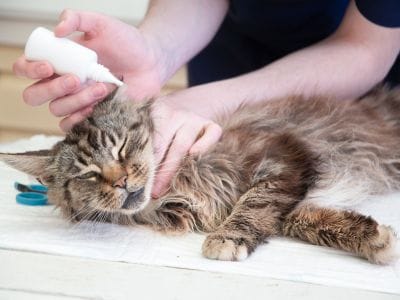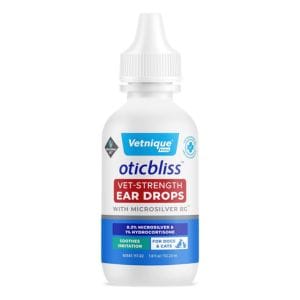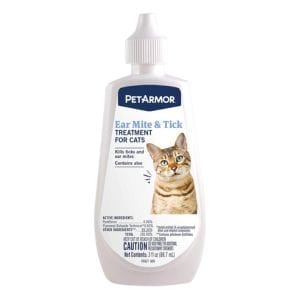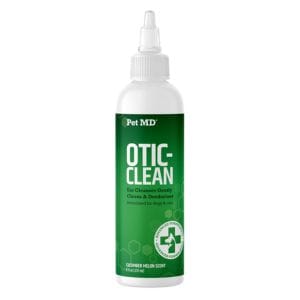
We may earn a commission when you purchase via our links at no extra cost to you.
We only share resources that meet our high standards
Introduction
If your cat has been scratching its ears more than usual or shaking its head like something’s crawling inside, you might be dealing with ear mites. These tiny parasites are one of the most common causes of ear discomfort in cats, yet, when detected early, they’re also one of the simplest conditions to treat.
In this guide, you’ll learn how to spot and treat ear mites in cats and prevent them from returning, whether you’re handling it at home or with your vet’s help.
What Are Ear Mites in Cats?

Ear mites are microscopic parasites, most commonly Otodectes cynotis, that live inside the ear canal of cats. They feed on wax and skin oils, causing irritation and inflammation.
They spread easily through direct contact, especially among kittens, outdoor cats, and multi-pet households. Ear mites are highly contagious between cats and dogs, but they don’t survive long on humans.
Unchecked, an infestation can lead to secondary ear infections, open wounds from scratching, or even partial hearing loss.
Common Signs and Symptoms of Ear Mites
Because ear mites are so small, you won’t usually see the parasites themselves, but the signs they leave behind are hard to miss.
Behavioral Signs
- Constant scratching at the ears or neck
- Shaking or tilting the head
- Rubbing ears against furniture or the floor
- Restlessness or irritability
Physical Signs
- Black, coffee-ground-like debris in the ear canal
- Redness or swelling in or around the ears
- Foul odor from the ears
- Scabs, hair loss, or crusting near the ears
Ear Mites vs. Other Ear Problems
| Symptom | Ear Mites | Yeast/Bacterial Infection |
|---|---|---|
| Debris color | Dry, dark brown/black | Yellow, moist, or waxy |
| Odor | Mild or none | Strong, yeasty smell |
| Itch level | Extreme itching | Moderate to severe |
| Contagious | Highly contagious | Usually not contagious |
How to Check Your Cat for Ear Mites at Home
You can do a gentle inspection before calling the vet. Here’s how:
- Find a calm spot and wrap your cat in a towel for comfort and safety.
- Lift the ear flap gently and look inside with a small flashlight.
- Check for black debris that looks like coffee grounds; this is a hallmark of ear mites.
- Smell the ear, a foul odor may indicate infection.
- Avoid inserting anything (like cotton swabs) into the ear canal.
If your cat’s ears look inflamed, have discharge, or your pet seems in pain, schedule a vet visit right away. Scratching too hard can break the skin and cause infection.
Diagnosing Ear Mites: What Vets Do
Your veterinarian will conduct an otoscopic exam, using a magnified scope to inspect the inside of your cat’s ear canal. They might also take a small sample of ear debris to examine under a microscope, confirming whether mites or their eggs are present.
This step is important because certain ear infections can look just like ear mite infestations, and treating for mites when it’s actually a yeast infection could delay the right treatment.
A typical vet visit for ear mites usually costs between $50 and $150, depending on the tests and medications needed.
How to Treat Ear Mites in Cats
Treating ear mites involves three key steps: kill the mites, soothe the irritation, and prevent reinfestation.
Veterinary Treatments (Most Effective)
Your vet may prescribe one of several proven medications:
- Selamectin (Revolution®): a topical solution that kills mites and other parasites
- Ivermectin: oral or injectable form, effective but only used under vet supervision
- Milbemycin (MilbeMite®): safe for most cats, even kittens
- Imidacloprid + Moxidectin (Advocate®): broad-spectrum spot-on treatment
These medications usually work within 2–4 weeks. Always treat all cats and dogs in the household, even if only one shows symptoms.

Vetnique Oticbliss Cat Ear Infection Treatment Drops
- Fast-acting medicated ear drops made with pure elemental silver
- Gently yet effective medicated ear drops use an alcohol-free cleanser to aid in ear wax removal
- Maintain your pet’s overall ear health & hygiene
- Made in the USA from globally sourced ingredients & recommended by veterinarians worldwide!

PetArmor Ear Mite Treatment for Cats
- Contains active ingredients that kill ear mites and ticks.
- Itch Relief: The mite and tick medication contains soothing aloe that helps relieve itchy ears.
- Recommended Use: Apply five drops into each ear twice daily.
- Cat tick treatment comes in a handy squeeze bottle, making it easy to give your cat the right dose every time.

Pet MD Otic Clean Cat Ear Cleaner
- Safe & gentle cleanser with Aloe Vera for daily use even for kittens.
- Eliminates build up of wax, fluid, dirt & debris to stop Your pet from scratching and head shaking.
- Made in the USA in our federally regulated manufacturing facilities.
- Veterinarian recommended.
Cleaning the Ears Before Treatment
Before applying medication, clean the ears gently to remove debris and improve absorption:
- Use a vet-approved ear cleaner or saline solution.
- Apply a few drops, massage the base of the ear, and wipe away loosened debris with gauze.
- Avoid alcohol or hydrogen peroxide, which can irritate sensitive skin.
Natural Home Remedies (for Mild Cases or Maintenance)
If you prefer natural methods or as follow-up care, some gentle remedies can help soothe irritation:
- Olive oil or mineral oil: Smothers mites and softens debris. Use a few drops daily for a week.
- Coconut oil: Has mild antibacterial properties and helps with healing.
- Apple cider vinegar (diluted 1:1 with water): Can help rebalance the ear’s pH, but never use it on broken skin.
⚠️ Tip: Always check with your vet before using home remedies, especially for kittens or if there’s redness or infection.
For more natural pest control ideas, see our related guide:
👉 Natural Flea Remedies for Cats
Preventing Ear Mites in the Future
Once your cat is mite-free, keeping them that way is simple: regular ear checks, gentle cleaning, and staying on top of flea and parasite prevention can go a long way in protecting their ears and overall comfort.
Keep Ears Clean
Wipe your cat’s ears weekly with a damp cotton pad or vet-approved ear cleaner.
Maintain Regular Parasite Control
Monthly topical preventives (like Revolution or Advantage Multi) protect against mites, fleas, and worms.
Clean the Environment
- Wash bedding, blankets, and toys in hot water.
- Vacuum and sanitize cat trees and resting areas.
Protect Multi-Cat Homes
If one cat gets ear mites, assume the others are exposed, and treat all pets to break the cycle.
Regular Vet Visits
Annual wellness exams catch ear problems early and keep parasites in check.
Common Mistakes to Avoid
- Self-diagnosing without vet confirmation
- Using ear products made for dogs on cats can be dangerous; some of the ingredients are toxic to cats.
- Skipping follow-up cleaning after treatment
- Stopping medication too early, mites can survive and return
- Ignoring other pets, reinfection happens quickly
FAQs About Ear Mites in Cats
Key Takeaways
- Ear mites are tiny parasites that cause intense itching and black debris in cats’ ears.
- Vet-confirmed diagnosis ensures correct treatment.
- Prescription medications are the fastest, safest cure.
- Clean ears and treat all pets to stop reinfestation.
- Regular preventive care keeps mites away for good.
Conclusion
Ear mites can cause a lot of discomfort for your cat, but with quick treatment and regular ear cleaning, they’re completely manageable.
Start by confirming the diagnosis, follow your vet’s treatment plan, and maintain regular ear care. A little preventive effort keeps your feline friend comfortable, happy, and mite-free.







